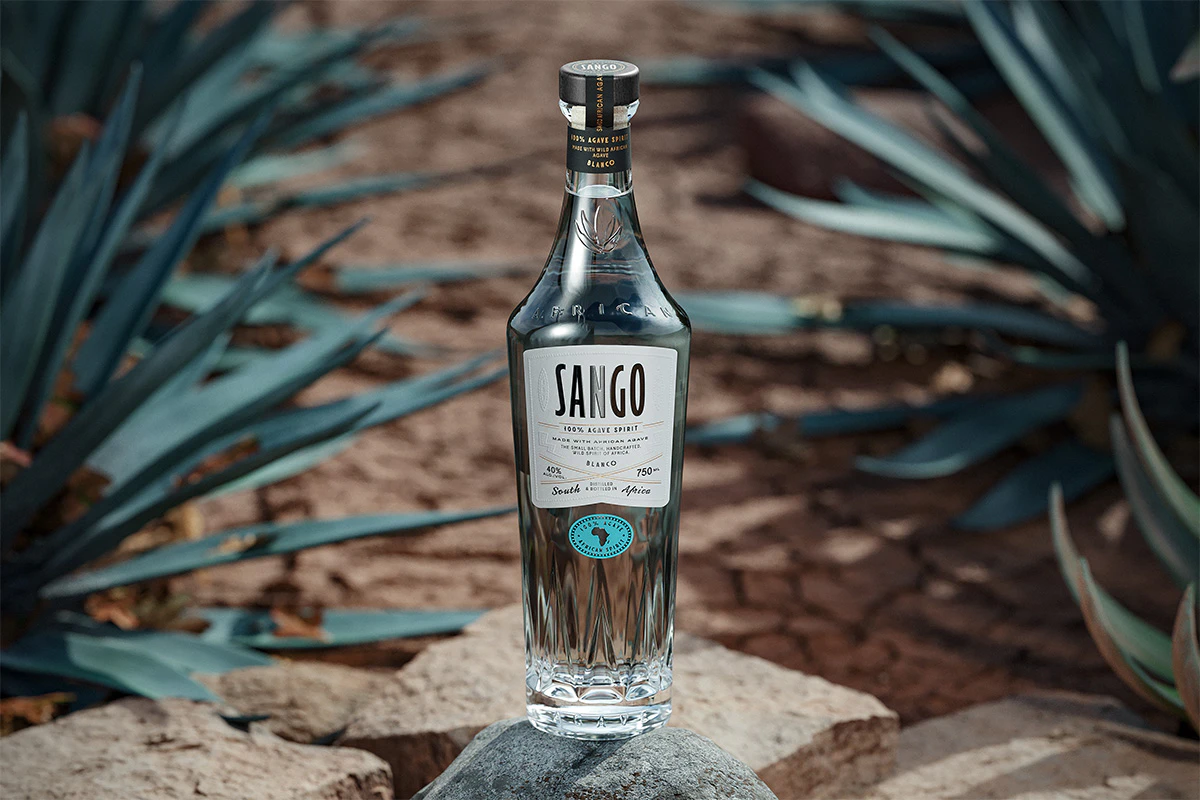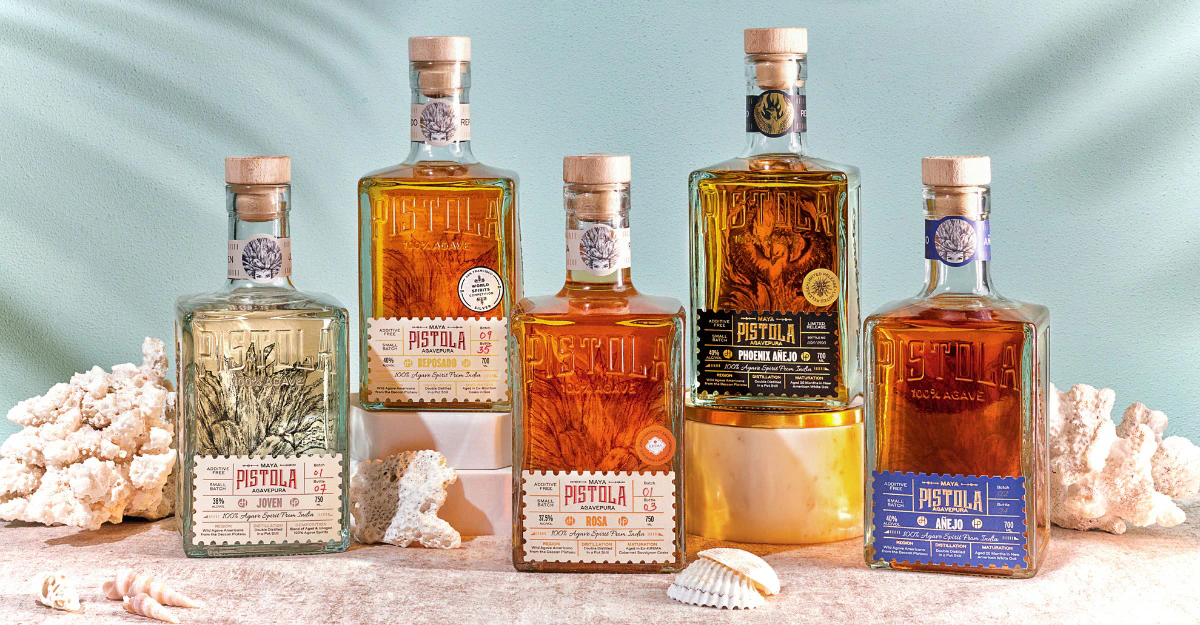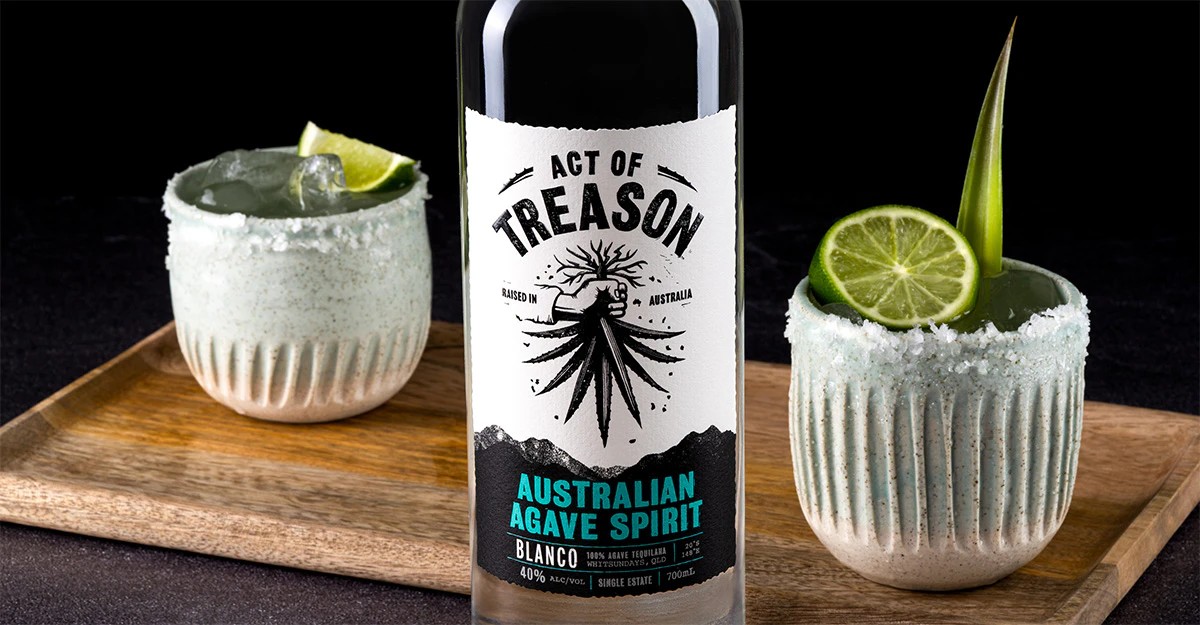Over the past couple of decades, the popularity of Mexico’s agave spirits has surged. According to the Distilled Spirits Council of the United States, volumes grew nearly 300 percent over a 20-year period.
However, while most drinkers associate agave spirits with Mexico, that could be set to change. In semiarid places around the world, producers are growing, harvesting, and distilling agave.
It has the potential to be an exciting time for agave enthusiasts—if those producers can convince people to decouple agave from its presumed home.

Photo: Courtesy Spearhead Spirits
African Agave
“I think there is intrigue, first of all,” says Damola Timeyin, cofounder of Spearhead Spirits, whose brands of agave, gin, vodka, and whiskey are all made from African ingredients. “People are surprised that agave grows outside of Mexico.”
Their Sango agave spirit, recently launched in the United States, is a new addition to the portfolio. Made from South African–grown Agave americana and Agave salmiana, the Sango Blanco won gold at the 2024 International Wine & Spirits Competition; the Reposado version, aged in South African pinotage wine barrels, won silver.
The hot, dry conditions in much of South Africa are ideal for these plants. The agave for Sango grows in two locations: the semidesert of the Karoo and the Eastern Cape province. “There is little rainfall … about 19 inches of rainfall a year, at best,” Timeyin says. While it’s hard to pinpoint exactly how long agave has grown there—and who introduced it—he says the plants have been established on the continent for more than a century.
The wild agave plants used in Sango are typically five years old when harvested and shipped to the distillery. “We instinctively believed that wild, polyculturally grown agave is better—not just for the environment, but also on the palate,” Timeyin says.
The intense South African sun powers not only the plants, but also the Midlands Distillery in KwaZulu-Natal where Spearhead contracts production of its spirits. “We run around, at last count, … 116 480-watt panels, and then we put that back into the grid,” Timeyin says. “We generate about 120 kilowatts per day.” The distillery also operates a biomass boiler as part its sustainability efforts.
Timeyin emphasizes that the Spearhead team has a deep respect for the tradition, heritage, and quality of Mexican agave spirits. “We take our guide from that,” he says.
However, he says, these spirits aren’t quite the same as their Mexican counterparts. Timeyin describes the flavor as “vibrant” and suggests serving Sango Spirit in a cocktail with mango juice, lime, and agave syrup. He also suggests a Nigerian suya spice mix, [a blend of ground chiles, ground peanuts, ginger, garlic powder, and onion powder,] as a possible replacement for salt when serving the spirit as a shot.

Photo: Courtesy Maya Pistola Agavepura
Agave on the Subcontinent
Agave americana also grows on the massive Deccan Plateau, about 1,970 feet (600 meters) above sea level in southern India.
“India has numerous agave species found growing across the country in the wild,” says Rakshay Dhariwal, founder and director of Maya Pistola Agavepura. He traces the plants history in India to British colonial influences.
It’s not only the plateau—Dhariwal cites Shimla in the north, Rajasthan in the northwest, and Andhra Pradesh in the south as areas where agave can flourish. However, he says, the red-black volcanic soil of the Deccan Plateau provides the ideal microclimate for agave. “Its terroir is similar to that of Central America,” he says.
Dhariwal launched the brand in 2022. Products include a reposado, typically aged four to six months in virgin American oak and former bourbon barrels, and a rose aged in cabernet sauvignon barrels. He says interest in agave has spiked alongside that of the cocktail culture. “In India, there has been a sharp uptake in dedicated agave bar menus and cocktail programs,” he says.
While Dhariwal says customers are learning quickly about the category, tequila still gets the most attention. “Consumers often confuse all agave spirits to be tequila,” he says. “There is a need to continue to clarify the multiple nuanced categories … that fall under this larger umbrella, and a need to constantly reiterate these differences.”

Photo: Courtesy Top Shelf International
Agave Down Under
At Australia’s Top Shelf International, CEO Trent Fraser and team also face the marketing challenge of launching an agave spirit from a surprising country.
He describes global agave-spirits production as “an act of entrepreneurship.” Their Act of Treason brand is a tongue-in-cheek way to introduce Australian drinkers to the concept of an agave spirit from much closer to home.
Fraser, who grew up in Australia’s wine country, has a wealth of international beverage-industry experience that includes working for Dom Perignon and building the Volcán de Mi Tierra brand in Mexico, both for Moët Hennessy Louis Vuitton.
He became friends with people who were planting agave back in Australia, and they naturally sought to learn from his on-the-ground experience in Mexico. Fraser says he “started sharing with them, basically what not to do.” He took the opportunity to return to Australia in 2021 and build the agave spirit brand with Top Shelf; the company named him CEO in April 2023.
While Jalisco is 20 degrees north of the equator, Fraser says, the coastal agave fields on the doorstep of the Great Barrier Reef are 20 degrees south of it—the temperature, median rainfall, and humidity experienced by the Blue Weber agave plants are similar to conditions in Guadalajara.
The soil is different, however, and Fraser says that’s part of what makes Act of Treason unique. “It does take on a different profile,” he says, emphasizing the spirit’s grassiness, minerality, and slight sweetness. The company has invested in agronomy to get high-quality ingredients, he says, working with the University of Adelaide on trials that test how the agave responds to stress, irrigation, and different mulches.
The methods used to produce Act of Treason are like those in Jalisco, Fraser says, but there are also differences. The operation is still relatively small, and the harvesting process is largely manual for now. They steam the piña—the heart of the plant—for three days in an oven designed to resemble a traditional Mexican horno, but the oven is made from an upcycled shipping container instead of bricks. Rather than the intensive and traditional tahona method that is still used by some tequila producers, Top Shelf uses a repurposed wine press to squeeze the agave fibers after cooking.
“You want to softly and gently extract the juice from the fibers,” Fraser says. “The tahona method is … our inspiration for this.” They then distill it twice in a copper pot still.
For all these modern brands creating agave spirits in new regions, there’s a blend of respect for Mexico’s tradition while innovating and adapting with new methods that vary by place.
Fraser says he is still in touch with some tequileros in Mexico, and they have been supportive. “We are absolutely incredibly humble and respectful to the founding fathers of Mexico,” he says, “and we wouldn’t be here today without them.”
